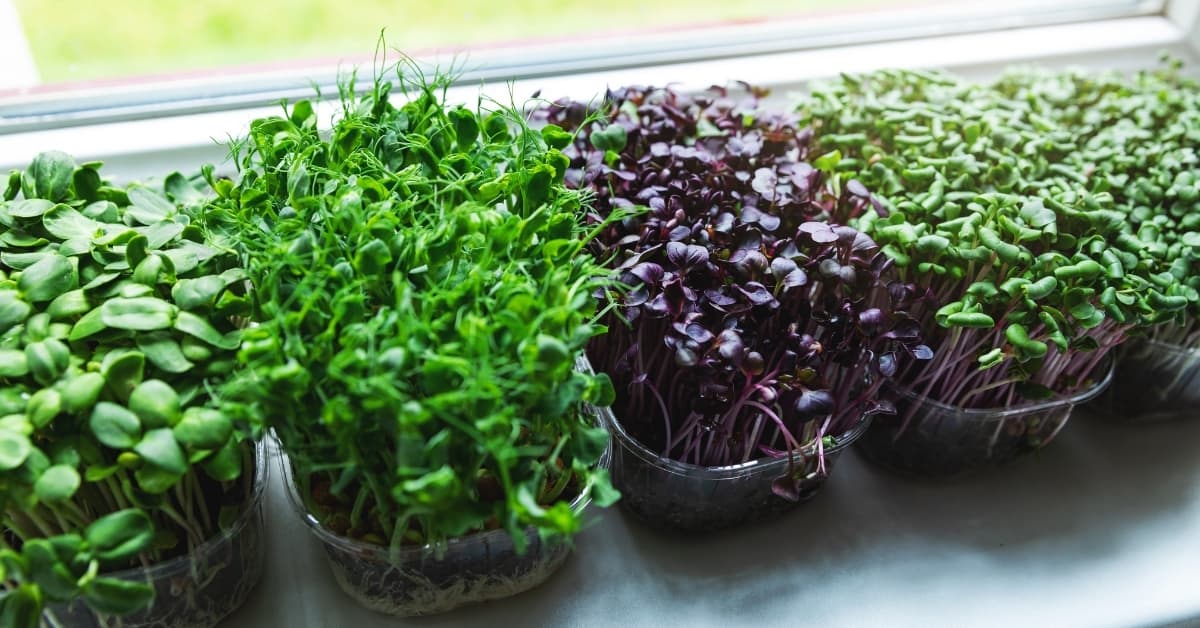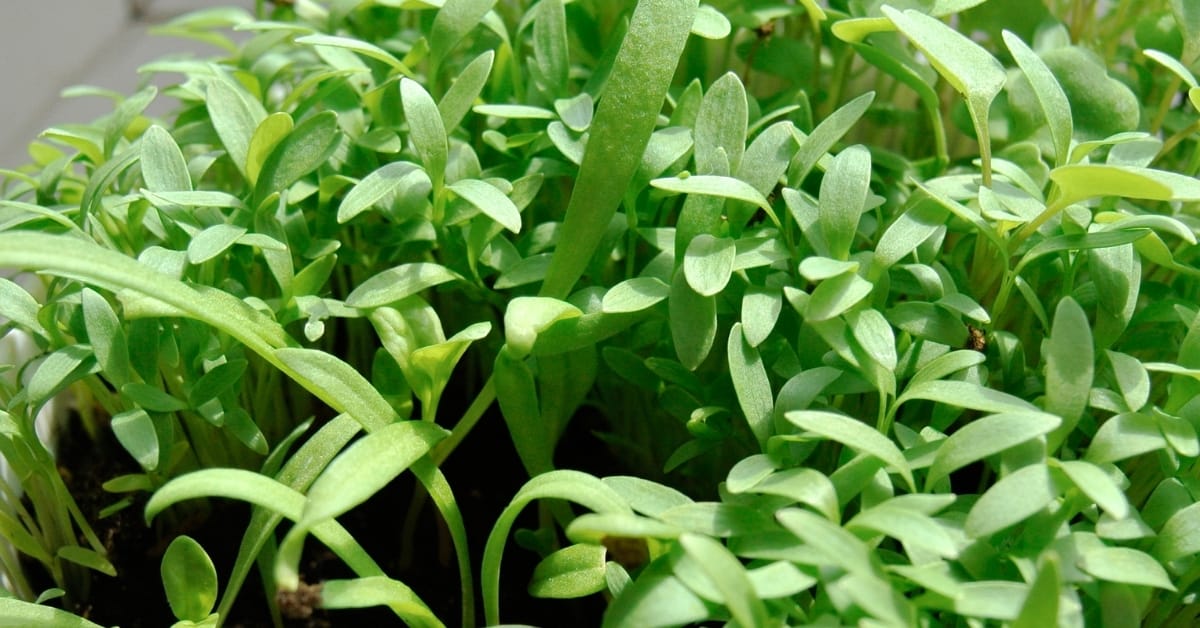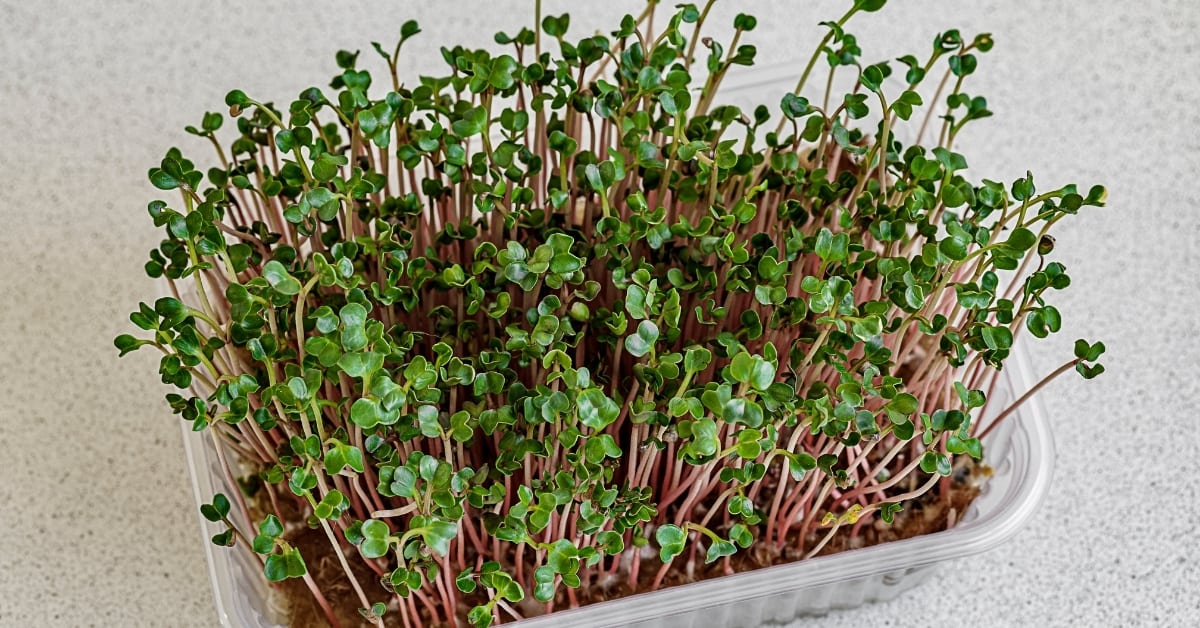If you want to know “can microgreens grow into full plants?” then this article will help you with the most authentic information given.
Microgreens are easy to grow for the beginning gardener and provide instant gratification because they only take a couple of weeks to mature. And since they grow from seeds, you might wonder if they could ever evolve into mature plants.
Microgreens won’t grow into mature plants. The very purpose of growing microgreens is to sprout a lot of seeds quickly in shallow trays. They are then harvested after the leaves grow two inches. Harvesting them stresses the plants out. Plus, the plant roots grow into a tangled mat. Trying to untangle them to replant puts too much stress on the plant and kills it.
Why Microgreens Can’t Grow into Full Plants
Microgreens are plants that have already sprouted but haven’t hit the baby salad stage yet. They are usually about two inches high and have about four leaves on each stem.
When you are growing plants for the purpose of producing microgreens, you are using.
- Shallow trays or small containers
- A thin layer of soil to provide nutrients
- Water to encourage the seeds to germinate.
Consequently, the seeds sprout within the first week and produce their first leaves within two weeks. This is the stage microgreens can be harvested.
When the seeds begin to grow,
- Their roots push through the soil.
- And it is being stopped by the tray or container.
- The roots then become tangled and form a mat.
If you’ve already harvested the microgreens, chances are you’ve removed the leaves and stem of the new plant. This stresses the young plant out to the point where it won’t recover or grow new leaves.
If you try leaving the microgreens in their growing tray and attempt to grow them into larger or more mature plants, they will die because of the crowded growing conditions.
The crowded growing conditions stress the young plants and expose them to possible disease and mold. Also, even if you attempt to put the plant in a bigger pot with more soil, the chances of the plant surviving this stressful process are very slim.
Some Microgreens May Grow to Mature Plants
Even though most microgreens won’t grow into mature plants, there are always exceptions to the rule. If you attempt to detangle the roots of the microgreen plants and repot them, they may grow. But there’s no guarantee.
Some plants, like onions, may grow into mature plants if you attempt to repot them because the roots don’t get tangled and may easily transplant.
There is a Way to Grow Microgreens into Mature Plants
The seeds you buy for microgreens are regular seeds and can grow into mature plants if given the right conditions. The materials you use and how you plant your seeds dictate how they’ll grow.
If you would like the option to harvest microgreens and grow mature plants from the same seeds, then you have to consider the growing conditions to support both choices.
Successful Growing Conditions for Microgreens
For microgreens, you’ll usually have
- Shallow trays or Styrofoam containers or something similar
- About an inch or two of organic potting soil or another type of soil
- Microgreen seeds or any seeds from your favorite vegetable or herb good for harvesting
But the typical growing conditions for microgreens aren’t conducive to growing mature plants. These conditions are
- Seeds planted very close together
- Only a couple inches of soil to support growth
- Immature roots in shallow soil
Successful Growing Conditions for Mature Plants
The materials you use to sprout seeds for mature plants are
- Shallow trays filled with starter pots
- About three to four inches of organic soil designed for starter plants
- Seeds you plan on harvesting for both microgreens and mature plants
The conditions for growing healthy mature plants are
- Spacing out seeds according to their growing needs
- Enough soil to support a healthy root structure
- Enough room for plant to grow tall and strong

How You Can Microgreens Grow into Full Plants?
Here’s how you can grow enough plants to harvest for microgreens and leave some to grow into mature plants. The process to do this involves thinning the plants out.
Since microgreens are young and tender plants, as long as they are spaced apart, you can grow them into mature plants.
The first step is to decide what kind of vegetables and herbs you want to grow.
This is important because many microgreen seed packages are specially mixed to grow a variety of lettuces and vegetables. If you plan on growing seed into mature plants, you may want to consider keeping them separate.
Some plants shouldn’t be considered for both microgreens and mature plants. These include vegetables from the nightshade family, such as
- Tomatoes
- Potatoes
- Eggplant
- Okra
- Any type of Peppers
- Jalapenos
The reason nightshade vegetables shouldn’t be considered for microgreens is that their leaves and stems are poisonous and shouldn’t be consumed.
Next, make sure your supplies for growing plants can support both microgreens and mature plants. This includes
- Pots or trays deep enough support a healthy root system. Ideally, you want the soil to be three to four inches deep.
- You need a plant tray without holes to hold the pots or seed starter trays, so it catches any water that drains out.
- A warm, sunny location to grow your plants. The temperature needs to stay consistent at about seventy degrees.
Then, choose the right soil. Soil choice is essential because you want healthy plants that are not prone to disease or mold. Some good choices are
- Certified organic potting mix
- Cocopeat, which is the fibrous husk from coconuts
- Vermiculite
- Sifted compost
- Worm Castings
You can mix a good blend of all the soils above to get a good base.
When you’ve chosen your location, and gathered all your supplies, make sure to put two to three inches of soil in the pots.
The key to planting enough seeds to grow both for microgreen harvesting and mature plants is to give them space to grow. Follow the directions on the package for spacing, but don’t be afraid to add a little more.
After about two weeks, your plants should be ready for microgreen harvesting. Do this by
- Examine the plants in each pot, and make sure there are at least four leaves on the stem.
- Decide which one you want to grow into a mature plant.
- Snip the extra plants right above the dirt
- Make sure to harvest the stem and leaves.
You don’t have to thin your plants out all at once. But make sure to thin them out before they get too big.
Once your plants have grown to about three to four inches tall, transplant them into larger pots or to your outside garden.

Some Microgreens Can be Harvested More Than Once
The process of harvesting microgreens generally involves taking both the stem and leaves of the young plant. So, you will only get one good harvest from your flat of microgreens.
This is why it’s recommended you plant microgreens in waves so that you can have fresh greens on a regular basis. For example, you could start a new tray every week.
But if you’d like to harvest your microgreens more than once, some varieties will grow back. These may include
- Peas
- Beans
- Kale
Do this by harvesting the microgreens above the first leaf. Give your young, tender plant some leaves left to grow. Also, consider experimenting with some of your other favorite vegetables to see if you can get them to regrow.
Growing Microgreens versus Mature Plants
If you are going to grow microgreens for their health benefits, then it doesn’t make sense to develop them into mature plants because microgreens are reported to have four to six times the nutrients as full-grown plants.
The process for growing microgreens isn’t conducive to growing mature plants unless you are growing mature plants and harvesting microgreens as a side benefit.
Although there are ways to grow microgreens into mature plants, the whole point of growing microgreens is to have fresh vegetables always available. So, enjoy harvesting that tiny handful of flavorful goodness for your dinners.

